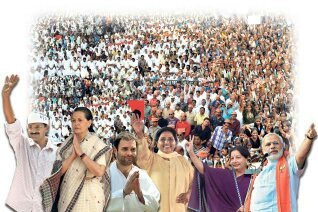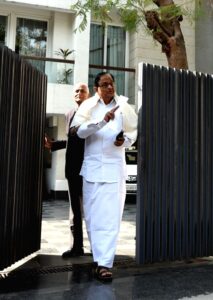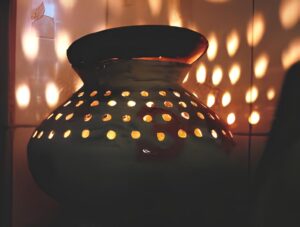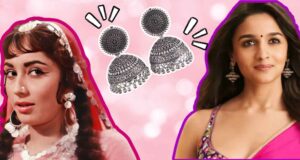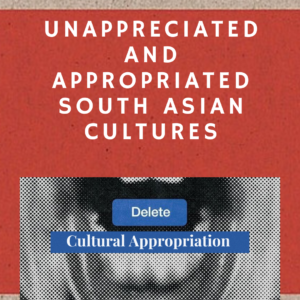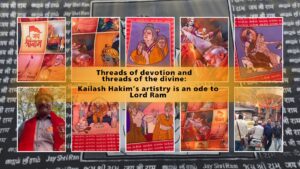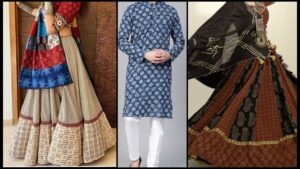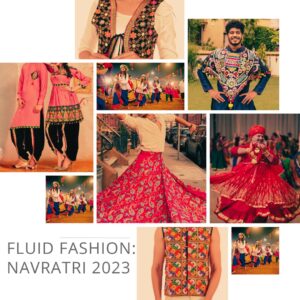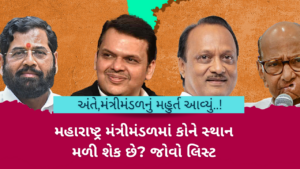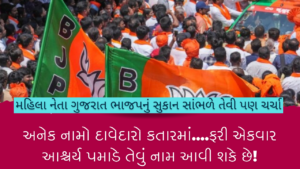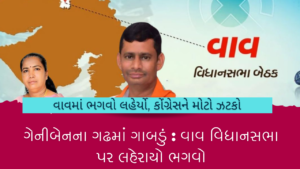 “That red bindi between her eyebrows adds to her existing bold image while she is raising her voice in the parliament.”
“That red bindi between her eyebrows adds to her existing bold image while she is raising her voice in the parliament.”
“Those saffron garments help him flaunt his political ideology while he is campaigning during the days of election.”
Wait! What are we setting the stage for? It is definitely for discussing the language of fashion of our ‘Netas’ who have traditionally used clothing as a visual shorthand to express their political views. From Mahatma Gandhi’s half naked fakir like chosen attire to Bal Thackeray’s saffron apparel with bold spectacles and a huge rudraksha mala, every Indian politician conveys his/ her connotation of existence in the political world through their wardrobe.
Men in the house
Prime Minister Narendra Modi’s principal political opponent, Congress president Rahul Gandhi, presents a young image with his kurta-pyjamas and shoes, whereas Modi’s well-groomed look and half-sleeved kurtas convey a man who knows his mind and appreciates order in all he does.
Narendra Modi is the one who pays utmost importance to the significance of power dressing. He has created a lot of buzz in the realm of political fashion, from his successful appropriation of the Nehru jacket to his introduction of the half-sleeved Modi kurta.
He adopts the same style while out on campaign, dressing in subdued, pastel-colored kurtas and accessorising them with ornate headgears or vibrant scarves, continuing the political leaders’ habit of dressing according to the locales they visit. When he was campaigning in Odisha, he exchanged his Japi cap for an ornate pagdi in Pune.
The politicians from South India, be it Chidambaram, Venkaiah Naidu or Chandrababu Naidu, all are known for their simplicity. For most instances, a white shirt and white veshti work well together. Not even gold, or kasavu, is allowed, lest it portrays the politician as a snob.
SP leader Akhilesh Yadav generally wears sleeveless black jackets with short kurtas and white pyjamas, which is rather conservative. He sticks to the traditional socialist emblem of the red khadi Lohia topi, even if he is running for office in coalition with the BSP, his erstwhile rival.
 Similar to the common man he stands for, Arvind Kejriwal primarily wears polyester shirts and pants. It seems to be the ‘non-threatening’ appearance. In contrast, the white kurta pyjama has come to represent corruption rather than honesty, much like the white ambassador. With the AAP name and poll symbol, a broom, written on it, the AAP has revived the iconic Gandhi topi, fashioned like an overturned boat, and used it as a symbol of its identity. In addition to these, muffler also holds a strong symbolic meaning of providing warmth.
Similar to the common man he stands for, Arvind Kejriwal primarily wears polyester shirts and pants. It seems to be the ‘non-threatening’ appearance. In contrast, the white kurta pyjama has come to represent corruption rather than honesty, much like the white ambassador. With the AAP name and poll symbol, a broom, written on it, the AAP has revived the iconic Gandhi topi, fashioned like an overturned boat, and used it as a symbol of its identity. In addition to these, muffler also holds a strong symbolic meaning of providing warmth.
What did ‘She’ opt for?
While Priyanka Gandhi evokes the image of her grandmother, Indira Gandhi, with her short, wavy hair and cotton handloom saris. Many other women politicians like Smriti Irani, Renuka Chaudhary, Sushma Swaraj, Sonia Gandhi, Nirmala Sitharaman etc. rely on the starched cotton saris with a huge bindi and kohl-lined eyes when they step out.
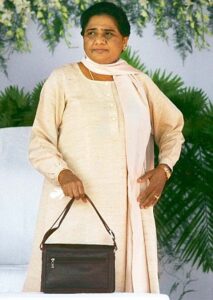 BSP chief Mayawati chooses to wear a simple salwar-kameez in her favourite shade, pink, rather than a sari. Even in her sculptures, her handbag remains at her side, an intrinsic element of her identity. It is more than just an accessory; it is an assertion of authority and the taking of a privilege that was formerly exclusive to the privileged.
BSP chief Mayawati chooses to wear a simple salwar-kameez in her favourite shade, pink, rather than a sari. Even in her sculptures, her handbag remains at her side, an intrinsic element of her identity. It is more than just an accessory; it is an assertion of authority and the taking of a privilege that was formerly exclusive to the privileged.
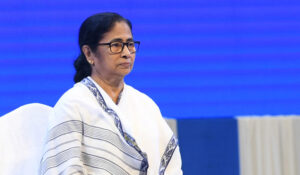 West Bengal’s Mamata Banerjee, on the other hand, is a picture of austerity in a white sari with blue border which gives an austere, almost Mother Teresa-like vibe. The border’s hues shift, but Mamata’s sari’s pristine whiteness and her rubber chappals don’t. Didi avoids flamboyance as if it were an ailment.
West Bengal’s Mamata Banerjee, on the other hand, is a picture of austerity in a white sari with blue border which gives an austere, almost Mother Teresa-like vibe. The border’s hues shift, but Mamata’s sari’s pristine whiteness and her rubber chappals don’t. Didi avoids flamboyance as if it were an ailment.
So, tell us your favourite!

